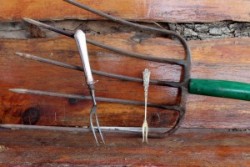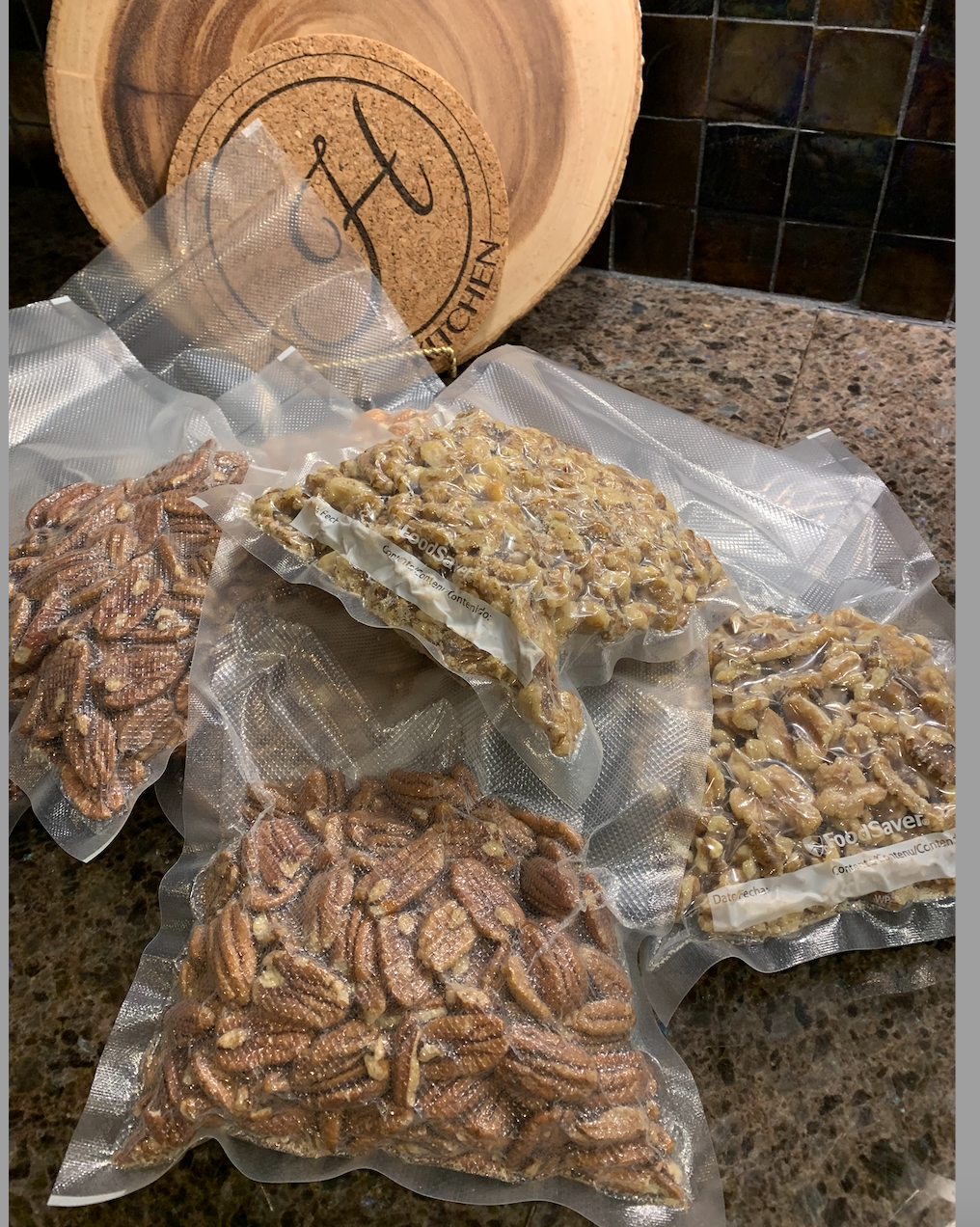Okay, I’ll freely acknowledge that a vacuum sealer may not be essential for everyone. But out here in the country where things aren’t so convenient, it’s a must-have.
When we moved to the sticks about 11 years ago we did not own a vacuum sealer. We rarely bought items in bulk (particularly meat) and didn’t have multiple freezers and freezer space. Out here in the wild, wild west, we not only buy virtually EVERYTHING in bulk, but we have our own beef processed by-the-animal – and that’s a lot of beef. It became pretty apparent we needed a good way to both keep things fresh and prevent freezer burn, and began experimenting with vacuum sealers.
The first couple we bought were basically to see if we would actually use them and if they worked before making a big investment. Our first one was a little cheapie we bought online, which we quickly wore out, and was limited in what we could package by its small size. Our second was a little more advanced model, but it was clearly being used beyond its design capability – we would have to wait for it to “cool down” to seal the next item, and fought with it if any moisture at all got into the sealing area.
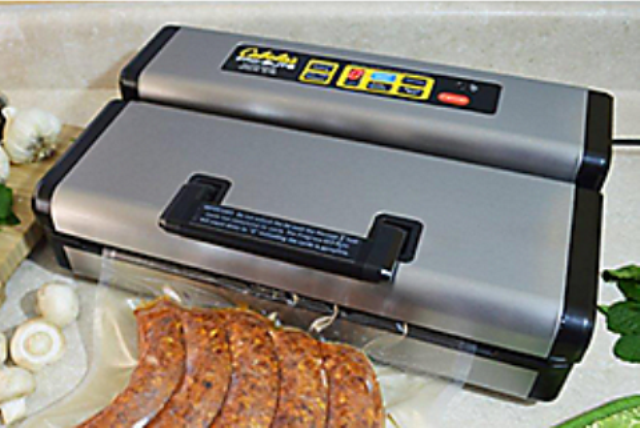
At last, this big guy – a Cabela’s Pro-Elite Vacuum Sealer – showed up under the Christmas tree one year, and is about as slick as snot on a doorknob. While we primarily use it for breaking down large meat purchases into 2-person portions or packaging up veggies straight out of the garden for future use, (Here’s a quick tip – trim the top and bottom of fresh corn on the cob, leaving the husk on, and seal the ears in a vacuum bag. Toss it in boiling water and shazam, fresh corn on the cob. If you love Ohio Silver Queen corn like I do, here’s a way to enjoy it months after the last corn stand closes) but it’s far from a unitasker. Other uses:
- Cheese. I have vacuum bagged blocks of cheese and had them last literally for months in the fridge, versus using a zip lock or other storage container. Need just a cup of Gruyere, but want it in a few months? Vacuum bag it.
- Marinade. Need to marinade something fast but don’t have a specialty device? Package up your meat and marinade in a vacuum bag and seal away. The vacuum action drives the marinade into the meat and makes for a much-shortened marinade time. You can look it up! Another option – package up your meat in marinade and toss it in the freezer. Meal prep done!
- Leftovers. Big holiday meals leave big leftovers? Don’t risk them going bad in the fridge. Package them up into frozen handy portions for reheating or reusing later. Much less waste!
- Hardware. Have that item that has associated hardware that you are going to store for a while? Bag up that hardware in a vacuum bag and tape or zip-tie it to the item. Everything stays together, and you don’t have that maddening “what did I do with that” moment.
- Packing. Love this for liquids, especially perfumes and other leakables. Okay, so it’s not much help on the way back, but by then everything is dirty.
- Sous vide. Nope, I don’t have this, but a vacuum sealer is the perfect tool if you do
I buy the bags in bulk on a roll, making for custom sized bags every time. You can use most any brand of bag on most any kind of sealer, but don’t go too thin on the mil thickness or you won’t get good results.
Carol’s Vacuum Sealer
I need to be honest here, I have never invested in a vacuum sealer. I used to watch my mom vacuum seal all the time and see her neatly stacked bundles in the refrigerator and freezer. Impressive.
I inherited that sealer. The Food Saver V1095 is all mine, but I don’t use it.
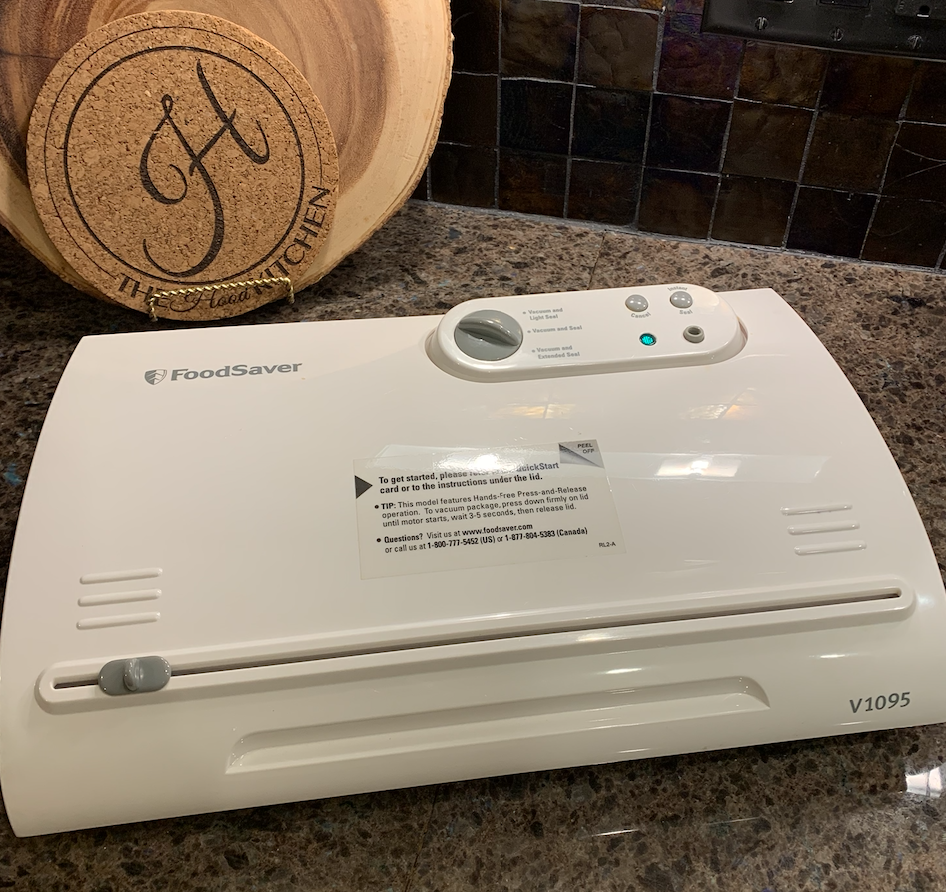
When I want something vacuum sealed, it is the responsibility of the ‘Ole Buckeye and I must admit that I seldom ask for his assistance. Since we purchase our chicken and ground beef at Costco it is already vacuumed sealed in smaller portions…2 breasts, 1.3 pounds of ground beef, etc. We do pull it out when I purchase a pork loin dividing it into smaller portions.
I will admit that part of the reason for its’ lack of use was purely storage. It was housed in the back of a cabinet making it difficult to retrieve. Recently when purging my kitchen and getting rid of gadgets I didn’t use (rice cooker and Fry Daddy) I moved the Food Saver to a retrievable location. Voila! It might actually be used more frequently. In fact we sealed our bulk purchase of nuts to keep them fresh.
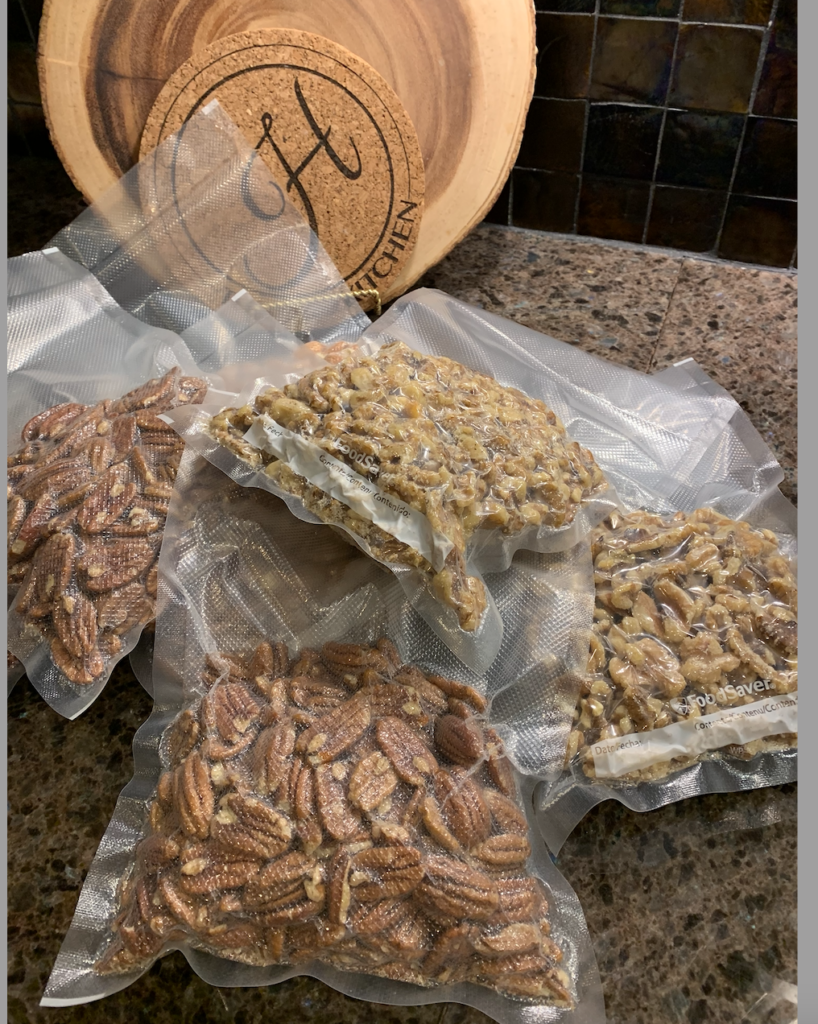
I will admit that sealing leakables when packing for a trip had never entered my mind…but I will definitely try that in the future. Great idea! Until 2020 we traveled a lot and leakage was often an issue.
Jan’s Vacuum Sealer
I have had a vacuum sealer for years. In fact, I may have been the one who purchased one for my mom (the one Carol has now). I use the sealer often enough that I burn through one every three or four years. (I must commend FoodSaver Customer Service. They once totally replaced my sealer at the end of the warranty period.)
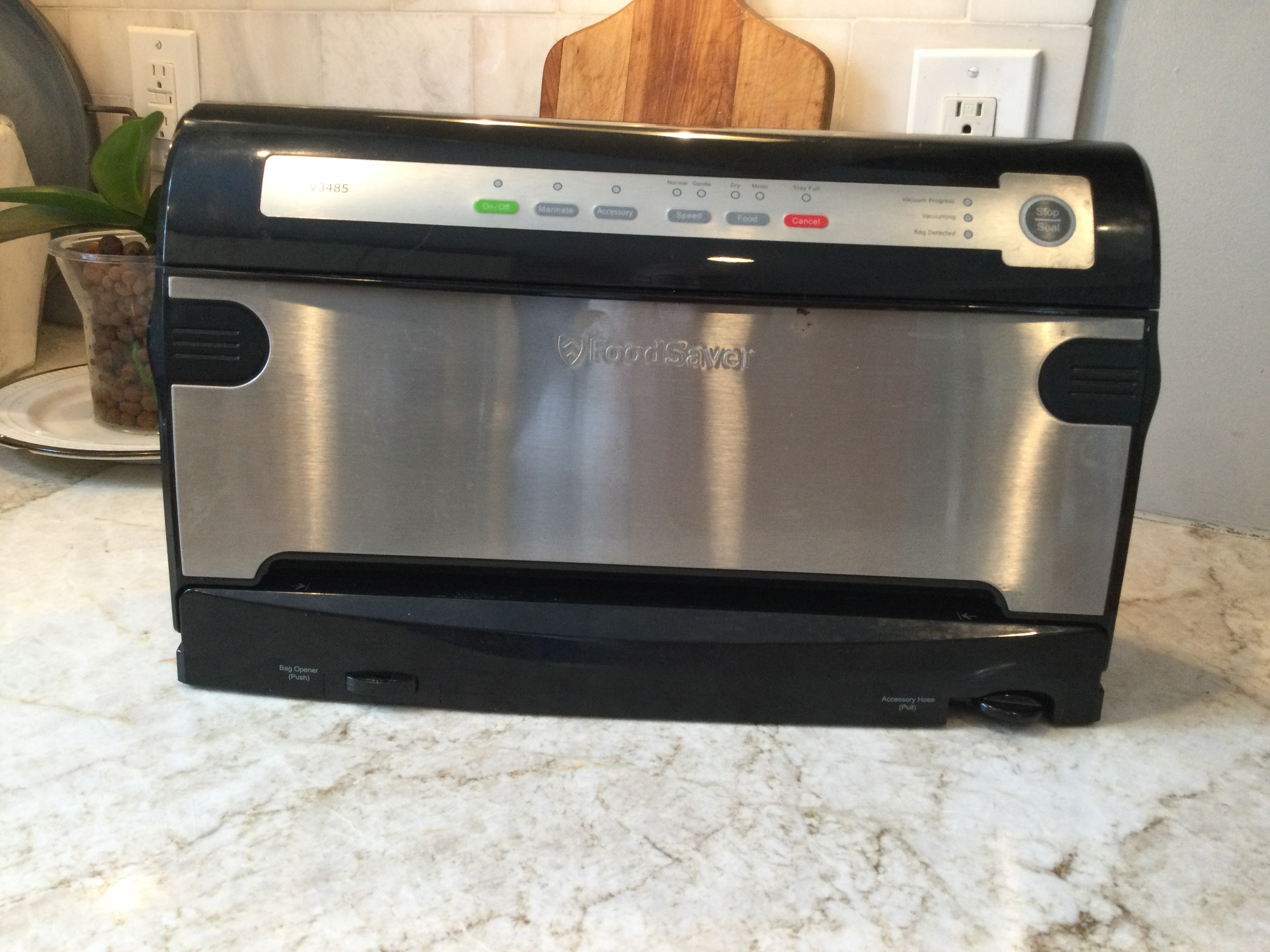
I have considered getting a heavier duty sealer (Cabela’s has one designed for game hunters) but the price difference is large enough that my replacement schedule evens things out.
I use it mostly for dividing up bulk packs of meat for the freezer. Items sealed in the bags last much longer without mold or freezer burn in the refrigerator or freezer. Leftovers are sealed for later use.
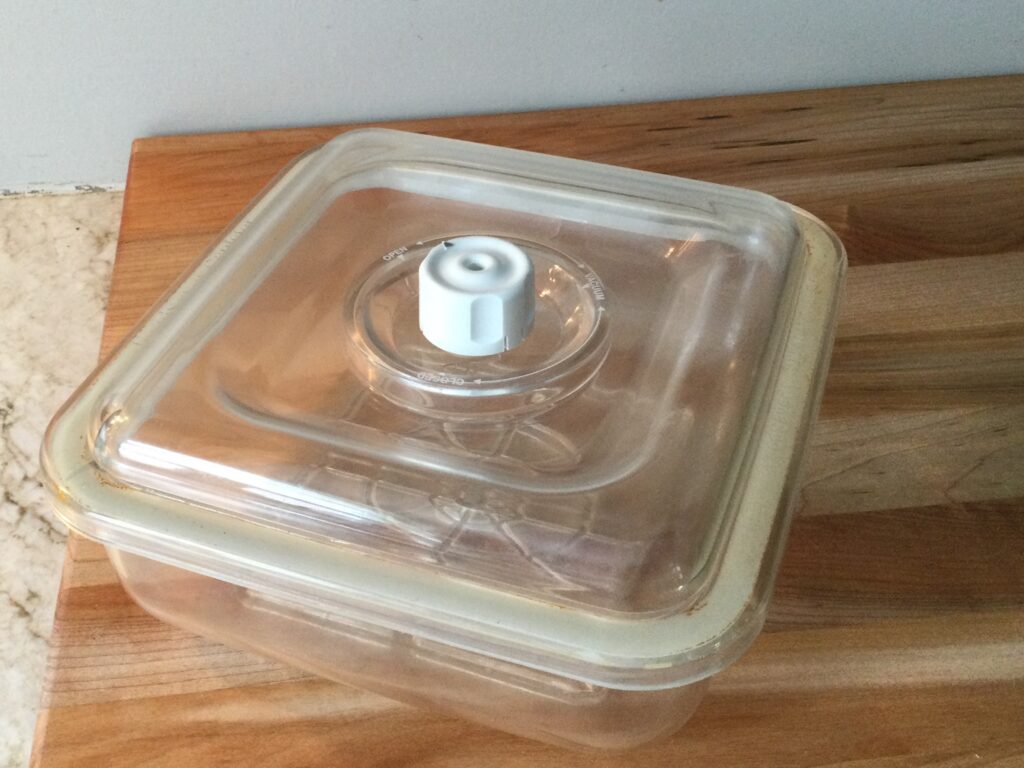
I have a marinade attachment for the sealer. I bought a package deal once with canisters and the marinade container…all that could be sealed. Marinade really does penetrate the meat much more quickly when air is removed from the container! There is also a wine bottle cork attachment that removes the air from a wine bottle for longer storage…not something that is an issue in the household.
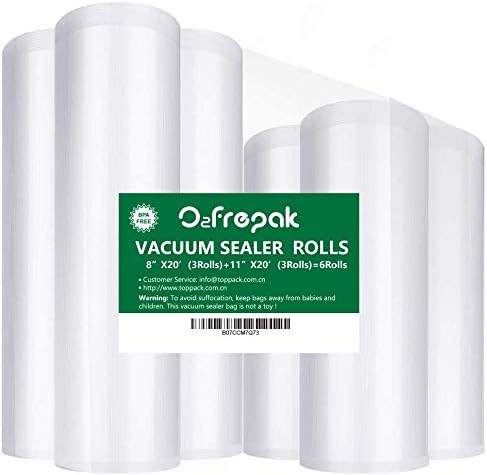
I always bought FoodSaver brand replacement rolls for my sealer until recently. Beginning last year I began using O2Frepak rolls from Amazon. They are good quality at a much less expensive price. I do agree with Pat, that rolls are much more convenient since you can make the custom size package that you need each time.
